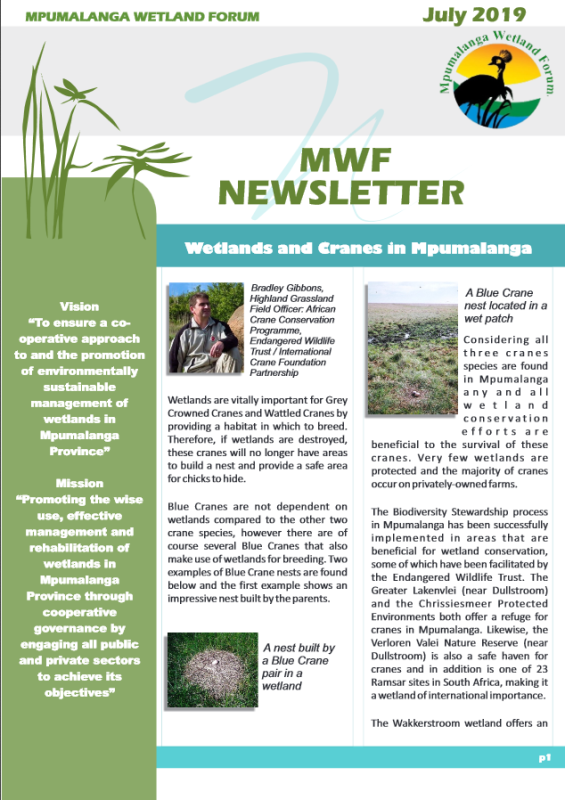Each year, 2 February is celebrated as World Wetlands Day to mark the adoption of the Ramsar Convention on
Wetlands of International Importance on 2 February 1971. This year the theme for World Wetlands Day is
Wetlands and Climate Change, to reflect on and raise awareness around the value of wetlands and how the
natural power of these ecosystems can be harnessed to turn the tide on climate change.
While most people in the Lowveld understand that the escarpment is the source of their water, few realise that the
escarpment also hosts a critical network of wetland systems. Very little research or mapping of these systems has
been conducted and as a result they are poorly understood. In January 2019, two wetland specialists, Dr. Lulu
Pretorius (University of KwaZulu-Natal and the Centre of Wetland Research and Training), and Anton Linström (Wet
Earth Eco-Specs) joined teams from the Association for Water and Rural Development (AWARD) and Kruger to
Canyons Biosphere Region (K2C BR) to conduct a preliminary investigation into some of the known wetlands in the
upper Klaserie and Sand River catchments. Soil samples confirmed that many of the wetlands assessed were in fact
peatlands, both in the swamp-forests along the foot of the escarpment and in the high-altitude wetlands in the
Klaserie headwaters. These results were surprising and the prevalence of peatlands, especially along the swamp
forests, is significant. “Peatlands comprise only a small percentage of wetlands in South Africa and are regarded as
unique and special. Even more so are peat swamp forests, because of the specific conditions required to form these
ecosystems”, noted Dr. Pretorius. Wetlands, in general, are important water stores but peat can hold up to ten times
more water than other wetland soils, making it an important resource in a water-scarce country such as South Africa.


